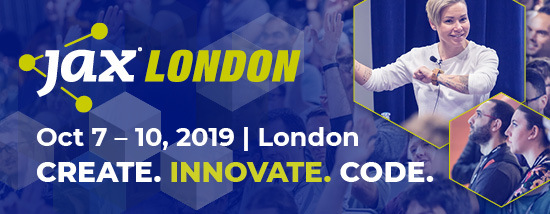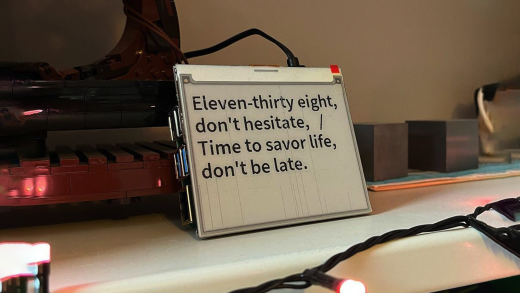“Works on My Machine” is a classic among software engineering errors. Tiny differences in local project setups can continuously give rise to new glitches. Setting up and maintaining a project and isolating it from other projects can be challenging and time-consuming. The same holds for differences between the setup for development, CI/CD and production deployments. For the latter, issues may be detected only late in the delivery chain and, subsequently, are time-consuming to test and fix. In this tutorial, we present a number of tools to address such issues and, in the progress, gain truly self-contained builds that are well shielded from any external influences.
Introduction
There is already a wide range of tooling to remedy setup-related issues. For example, nvm lets users quickly switch between multiple Node.js installations in the JavaScript world. Still, developers must select the appropriate version at all time. On the Java side, developers benefit from a JVM that abstracts away most of the underlying operating system. Hence, Java applications typically work equally well on Linux, Windows and OS X. Gradle further brings the Gradle wrapper to the table.
A Gradle build will always use the declared project-specific Gradle version to execute build operations. Gradle downloads and caches that version if necessary. With this Gradle addresses one of the main issues of nvm: everything happens transparently for the developer and the project itself is in charge of the local setup. One may call this Tooling as Code in line with the techniques applied for Infrastructure as Code. The subsequent sections outline how to apply those principles not just to Gradle, but to everything related to Java-centric build tooling. Most notably:
- JDK installation
kubectlto interact with Kubernetes clustershelmto package Kubernetes applicationsterraformto provision infrastructuregcloud,az,octo work with Google Cloud, Azure, and OpenShift- Node.js installation
- Local databases
- Execution of UI tests
There are projects that help with this:
- https://github.com/rmee/gradle-plugins/ hosts several Gradle plugins
- https://www.testcontainers.org/ to make use of Docker images in Unit testing
- https://github.com/srs/gradle-node-plugin to integrate Node.js into Gradle.
Have a look at https://github.com/crnk-project/crnk-example for an example application making use of these techniques.
Install a JVM
The jdk-bootstrap plugin from https://github.com/rmee/gradle-plugins/ achieves for the JVM the same comfort as the Gradle wrapper for Gradle. It can be added as a dependency to the Gradle classpath:
```
plugins {
id "com.github.rmee.jdk-bootstrap" version "1.0.20190725142159"
}
```
and be used together with the Gradle wrapper:
```
wrapper {
gradleVersion = '5.5'
}
apply plugin: 'jdk-bootstrap'
jdk {
useAdoptOpenJdk8('8u202-b08')
}
```
By calling:
``` ./gradlew wrapper ```
the gradlew script is enriched with logic to download and cache the selected JDK and setup the JAVA_HOME environment variable accordingly:
```
...
JDK_DOWNLOAD_URL="https://github.com/AdoptOpenJDK/openjdk8-binaries/releases/..."
JDK_VERSION="8u202-b08"
JDK_CACHE_DIR="${APP_HOME}/.gradle/jdk"
if [ -z "${JAVA_HOME}" ]; then
JAVA_HOME="${JDK_CACHE_DIR}/jdk-${JDK_VERSION}";
fi
if ! [ -d "${JAVA_HOME}" ]; then
mkdir -p "${JDK_CACHE_DIR}" || die "java: Fatal error while creating local cache directory: ${JDK_CACHE_DIR}"
...
fi
...
```
From this point forward, every developer will use the same JVM! The JDK is available from the project-local .gradle directory, as is Gradle itself.
Self-contained tooling from development to production
Having a stable, consistent JVM and Gradle setup is a good start, but usually, many more tools are involved across the project life cycle; most notably for testing, provisioning, and deployment. For example, tools like Terraform, Helm and kubectl are in frequent use to deploy applications to a managed Kubernetes service such as GKE on Google Cloud. All these tools are available as binaries for download and installation. But then again one faces the challenges brought up earlier and more:
- The local installation must be maintained by the developer.
- Binaries frequently pollute the developers home directory. When working on multiple projects, things can get mixed up quickly. For example, it is not hard to deploy to the wrong Kubernetes cluster with
kubectl.
While one can specify a custom home directory one way or the other, it is typically too cumbersome to drag along such a setting across a developer`s workflow from within Gradle and outside. - Binaries must be fetched from one of the download mirrors. While being simple for single developers, it can become a major pain point in corporate environments. There is no unique, established mechanism of how to deal with such binaries: how to download, cache and update. URLs can sometimes be cryptic and render automation unnecessarily hard.
Package managers like RPM work globally on the machine in use. - Developers, CI/CD servers, and operators may use different toolsets.
Puppet and Ansible are often found in production rollouts, whereas they are rarely used by developers for local development. With Gradle there is already a task execution engine that must be used by the project during the development process, why not make use of it at other places? Thereby, address the challenges from above and gain a unified toolset from development to production?
The elephant in the room is Docker. Its registry allows to download, cache, and update images. Images are executed in isolated runtime environments. However, it is far from clear how to best benefit from Docker in a typical Java (or other) project. The brought-up Terraform, Helm, kubectl and gcloud tools are all available as Docker images, but rarely used this way.
SEE ALSO: IntelliJ IDEA 2019.2 brings Java 13 Preview features, services tool window & much more
The most straightforward approach to work with Docker is to put the entire build into a Docker image. A popular project in this area is Source-to-Image from RedHat. But is this the desired way to go when checking against the issues from above? Developers are unlikely to adopt this model for local development. There is neither support from Gradle nor IDEs like IntelliJ and Eclipse to execute builds in Docker images. The more pressing question is, however, whether it is desirable or even possible to have everything in that one image?
Larger projects will be composed of many parts. If projects choose to go with a mono-repository to gain simplicity, then all parts are hosted in the same repository, built together, and released together through various artifacts. Different tools may have different requirements for the underlying operation system. Or maybe multiple versions of the same component or tool are involved for compatibility testing.
What one may rather desire is an orchestration of tooling-related Docker images, making everything work together without interrupting the workflow of developers and operators. Help comes here from:
cli-base,kubectl,oc,terraform,az,gcloudplugins from https://github.com/rmee/gradle-plugins/- https://www.testcontainers.org/
Both projects follow the same goal in different settings. Testcontainers simplifies the usage of Docker images in unit testing, whereas the Gradle plugins ease the use of Docker images within builds. Together they can achieve the desired goals from above. An example is given in the next section.
Deploy with Helm to Google Cloud
The kubectl, oc, terraform, az, gcloud plugins of https://github.com/rmee/gradle-plugins/ are designed to provide a minimal Gradle-integration layer above their native counterparts. It is explicitly not the goal to make use of REST and other APIs the tools may also offer: introducing a new access layer would need continuous maintenance effort to keep up with new features and, worse, require developers to learn a new API that is only applicable within the scope of Gradle. Instead, the plugins provides something similar to the Gradle Exec task while hiding the complexity of invoking Docker.
To apply the plugins make use of:
```
plugins {
id "com.github.rmee.jdk-bootstrap" version "1.0.20190725142159"
id "com.github.rmee.kubectl" version "1.0.20190725142159"
id "com.github.rmee.helm" version "1.0.20190725142159"
id "com.github.rmee.gcloud" version "1.0.20190725142159"
}
```
Then access to Google Cloud can be configured with:
```
gcloud {
keyFile = file("$projectDir/secrets/gcloud.key")
region = 'my-region'
project = 'my-project'
gke {
clusterName = 'my-cluster'
}
cli {
imageName = 'google/cloud-sdk'
version = '224.0.0'
}
}
gcloudSetProject.dependsOn gcloudActivateServiceAccount
gcloudGetKubernetesCredentials.dependsOn gcloudSetProject
```
In this case, a key file provides technical user access to the cluster for the specified project, cluster, and region. Notice the image configuration of gcloud. In contrast, the Helm image is not configured and the built-in default is used. To then issue helm and kubectl commands use:
```
task deploy() {
dependsOn gcloudGetKubernetesCredentials, helmPackage, tasks.jib
doFirst {
File yamlFile = file("build/helm/crnk-example.yaml")
String imageId = file("build/jib-image.id").text
helm.exec({
commandLine = "helm template --name=crnk --set image.tag=${imageId} ${helmPackageCrnkExample.outputs.files.singleFile} --namespace=default"
stdoutFile = yamlFile
})
kubectl.exec({
commandLine = "kubectl apply -f=${yamlFile} -n=default"
})
}
}
```
The example showcases several important properties:
- Gradle code declares the used tooling. No local installation is necessary.
- The commands match 1:1 with what developers execute in the command line. Nothing new needs to be learned. It is easy to experiment manually outside Gradle when facing new tasks and issues.
- Upgrading the Docker version of a tool gives instant access to the most current features. The plugins are minimalistic and are, to a large degree, agnostic to the used version.
- Under the hood, the plugins shield the user’s home directory! A new home directory is allocated in the
builddirectory. It underlies the same Gradle lifecycle as any other project file. Agradlew cleanwill remove the home directory. Other commands will subsequently build it up again if necessary. - The
execcommands will transparently map absolute paths to appropriate Docker paths. - The plugins are not limited to Docker images. They may also make use of already existing binaries on the local machine if desired for one or the other use case.
- There is a
cli-baseproject that provides an early abstraction layer to implement further plugins next to the already implemented one. - The
execmethods give access to the output. For example, for Helm the evaluated templates are written intoyamlFile.
SEE ALSO: Report & interview: Plan your container security as a core component
Giving control back to developers
Similar to jdk-bootstrap the Gradle plugins from the previous section hook into the gradlew wrapper task. A small shell script is generated for each applied plugin that provides a replacement of its native counterpart. The shell scripts are similar in spirit to gradlew and in case of kubectl looks like:
```
#!/usr/bin/env bash
WORK_DIR="$(cd "$(dirname "${BASH_SOURCE[0]}")" >/dev/null && pwd)"
[ -x /bin/cygpath ] && WORK_DIR=$(/bin/cygpath -m "$WORK_DIR")
...
exec docker run -i $TTY_PARAM $USER_PARAM --rm
"${HTTP_PROXY_PARAM[@]}"
...
-e HOME=/workdir/build/home
--workdir /workdir/build/home
-v $WORK_DIR:/workdir
google/cloud-sdk:224.0.0 kubectl "$@"
```
Its use is almost identical to the original binary. Limitations involve port mappings and volume mounting beyond the project directory which require further attention. An invocation looks like:
``` $ ./kubectl get pods -n=kube-system NAME READY STATUS RESTARTS AGE heapster-v1.6.0-beta.1-869f77bc95-n8h4c 3/3 Running 0 35d kube-dns-76dbb796c5-2xhdw 4/4 Running 0 35d kube-dns-76dbb796c5-cr8wl 4/4 Running 0 35d kube-dns-autoscaler-67c97c87fb-nl9fv 1/1 Running 0 35d kube-proxy-gke-sb4b-test-europe-west6-pool-1-0087b845-38fc 1/1 Running 0 35d kube-proxy-gke-sb4b-test-europe-west6-pool-1-0087b845-s21t 1/1 Running 0 35d ```
Outlook
The provided example showcases how to set up a basic Gradle plugin to deploy an application to a Kubernetes cluster on Google Cloud. The setup is fully self-contained and reproducible. The used tools are determined by the project. Developers do not have to maintain their installation. Artifacts do not leave the boundary of the project directory. And tools and versions can be combined arbitrarily to cover the most complex scenarios. For the Gradle plugins, work is still ongoing to simplify usage and extendability. More information can be found on the websites of the respective projects.
The post Tooling as code – Having truly self-contained Gradle builds appeared first on JAXenter.
Source : JAXenter


















